If you’re new to the world of red light therapy but finding some of the technical jargon and endless product options confusing, don't worry — you're not alone.
While there are more expensive and complex devices that you can invest in, a red light therapy bulb is one of the easiest and most affordable methods to enjoy the benefits of this science-backed wellness technology.
This guide will help you understand the basics and choose the right bulb for your specific wellness needs. Whether it’s skin health, joint pain relief, or muscle recovery, getting started is simple.

Why Start Your Journey with a Bulb?
Red light therapy devices range from full-body panels to handheld gadgets. However, bulbs are the most convenient and affordable option for many starters. They’re small, easy to use, and great for targeting specific areas of the body. Whether you’re looking to treat facial skin, soothe knee pain, or relieve neck tension, a bulb provides the right amount of concentrated red light therapy exactly where you need it.
Another advantage? Flexibility. The red light therapy bulbs can be screwed into regular lamp sockets or can be used with clamp stands, making them ideal for home use. This makes them suitable for beginners who would like to experiment with RLT without investing in a large, expensive panel.
What Are Red Light Wavelengths and Why Do They Matter?
When purchasing a red light therapy bulb, one of the biggest things to think about is the wavelength of the light that the bulb produces. It isn’t just technical trivia, however; it directly affects the results of treatment. [1]
Red Light (Around 660nm): This is perfect for getting the surface-level benefits. It delivers a collagen boost and softens the fine lines and wrinkles. It penetrates the skin up to 8–10 millimeters, ideal for facial treatment, scar reduction, and anti-aging effects.
Near-Infrared Light (About 850nm): This goes deeper, targeting muscle and joint tissue up to two inches. It is great for the relief of pain and inflammation, as well as muscle recovery. This light is not visible to the naked eye — but its effects are measurable.
Some bulbs operate at dual wavelengths, typically between 660nm and 850nm, for a balanced treatment focusing on both the skin and deeper tissues. You may choose one or both, depending on your treatment aim.
What Is Irradiance and Why Does It Matter?
You may come across the word “irradiance”, often used on product listings. Though this may seem like technical mumbo-jumbo, it is critical for understanding how strong the therapy will be.
Irradiance refers to the amount of light energy (milliwatts per square centimeter, or mW/cm²) that RLT basically delivers to your body. It’s similar to the water pressure coming out of your shower head: The higher it is, the more water flows in less time. Similarly, a bulb of greater irradiance emits more therapeutic light energy in less time, so sessions may be shorter and are potentially more effective.
As a general guide: [2]
- Minimum effective irradiance: ~20 – 30 mW/cm²
- High-performing bulbs: 80 – 100 + mW/cm² at 6 – 12 inches
However, it is not universal that higher irradiance is always better. One might need balanced irradiance – high enough to be effective, but not so strong that it causes discomfort or overheating.
Choosing the Right Beam Angle for Your Needs
A red light therapy bulb's beam angle determines how the light spreads and the concentration of energy it has when it strikes your body.
A narrow beam angle (about 30 degrees) concentrates light into a smaller area, providing higher intensity, making it especially well-suited for treating small, targeted areas of the body, such as facial skin, a sore knee, or a stiff shoulder.
A wide beam angle (60-90 degrees) spreads the light over a larger area; thus, it is fit for covering major parts of the body, including the chest, back, or thighs. The trade-off, however, is that the wider the angle, the lower the intensity becomes as you move further from the bulb.
If you’re targeting localized pain or minor aesthetic issues, choose a narrow beam. For general well-being or treating multiple zones, a wider range could serve you better.

Key Safety and Quality Factors to Check
Not all red light bulbs are the same. Some could even be poorly built, inefficient, or unsafe. Here’s what to look for so you can be sure you’re getting a safe, effective, long-lasting product: [3][4]
| Features | Why it Matters | What to Look For |
| Low EMF | Excessive EMFs disrupt your body’s functions | Bulb tested and certified for low EMF for regular use |
| Flicker-Free | Flickering, even when invisible, causes headaches or eye strain | Flicker-free or those using high-quality drivers |
| Heat Dissipation | Overheating shortens bulb life and reduces therapy quality | Metal (aluminum) bulbs with good ventilation and heat sinks |
| Longevity | Poor-quality, plastic-based bulbs may degrade and emit non-uniform light | Durable bulbs with metal housing and tested by a third party |
Your Quick Checklist for Choosing a Bulb
To simplify your buying decision, here are the key things to consider when choosing a red light therapy bulb.
- Clinically proven wavelengths — 660nm (for skin health) and 850nm (deeper tissue benefits) or a combination of both for a complete solution.
- Look for bulbs with high irradiance, ideally 80-100 mW/cm² or above at 6-12 inches – so your sessions will be effective without being too long.
- The beam angle should be the one that suits your own purpose: narrow angles are good for directed treatment, and wide angles for larger areas.
- Safety is also important—look for bulbs that produce low EMF output and flicker-free lighting, as well as the durable metal housing that provides good heat dissipation.
- A bulb with a warranty or third-party testing is a good indication of its quality and long-term value.
Making an Empowered Choice for Your Health
Selecting a red light therapy bulb isn’t only about purchasing a gadget — it’s an investment in your health. The best bulbs hit the sweet spot: They blend scientific credibility with design features tailored to your needs.
If you are looking to get healthy skin, reduce wrinkles, and improve skin health, choose red light (660nm) with a moderate beam angle. If you have deeper issues like back pain or joint stiffness, you’ll need 850nm NIR with a higher irradiance and a narrow beam for intensity.
Knowing about wavelengths, irradiance, beam angle, and safety features will allow you to select an appropriate red light therapy bulb — one that delivers real benefits rather than just promising results. Better health definitely begins with better tools. You don’t need the largest or most expensive device — just the right one for you.
References
- Cleveland Clinic. “Red Light Therapy: Benefits, Side Effects & Uses.” Cleveland Clinic, 1 Dec. 2021.
- Pagán, C. N. (2024, May 14). Red Light therapy: What is it? WebMD. https://www.webmd.com/skin-problems-and-treatments/red-light-therapy
- Jagdeo, Jared et al. “Safety of light-emitting diode-red light on human skin: Two randomized controlled trials.” Journal of biophotonics vol. 13,3 (2020): e201960014.
- Heiskanen, V., & Hamblin, M. R. (2018). Photobiomodulation: lasers vs. light-emitting diodes? Photochemical & Photobiological Sciences, 17(8), 1003–1017.



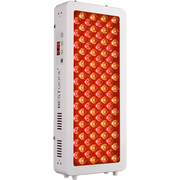









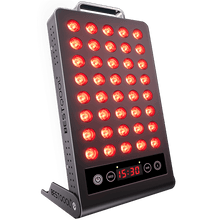
 Small
Small
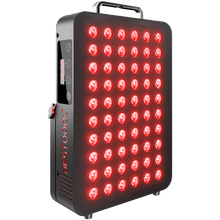
 Moderate
Moderate
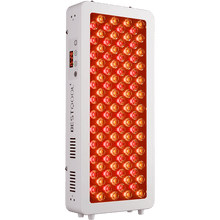
 Moderate
Moderate
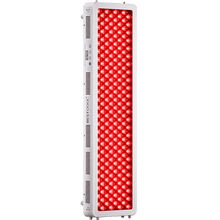
 Moderate
Moderate
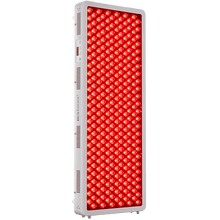
 Full
Full



